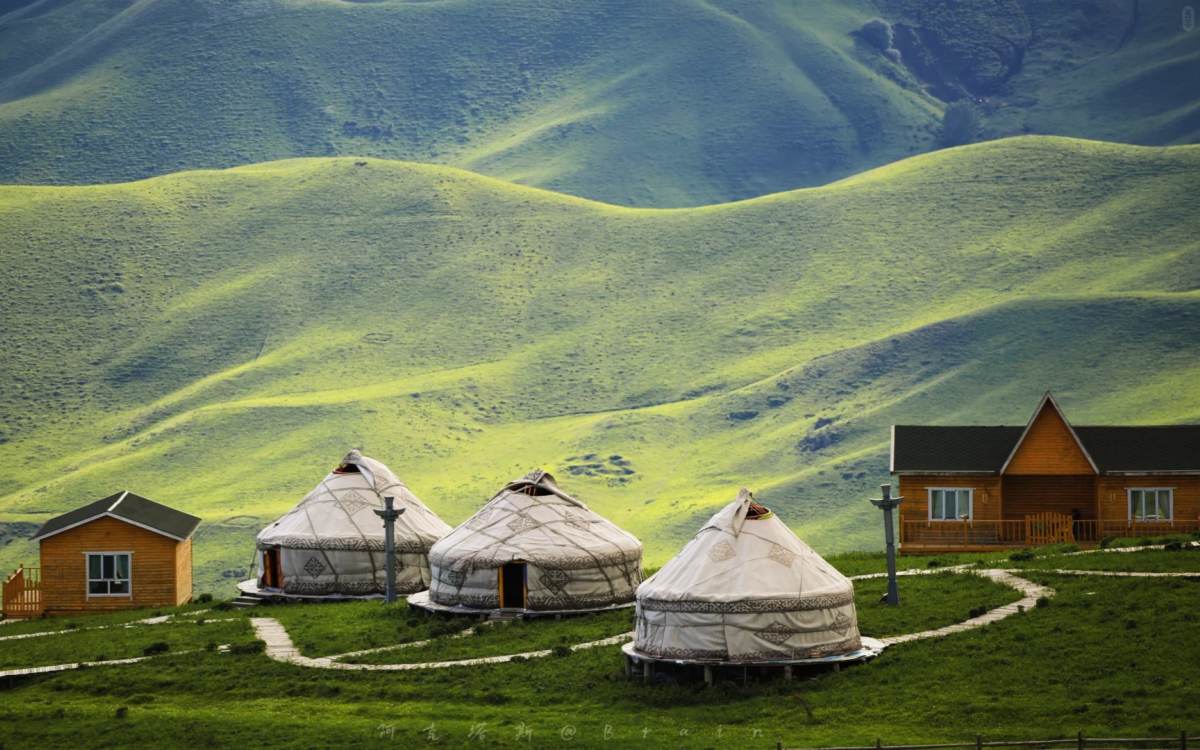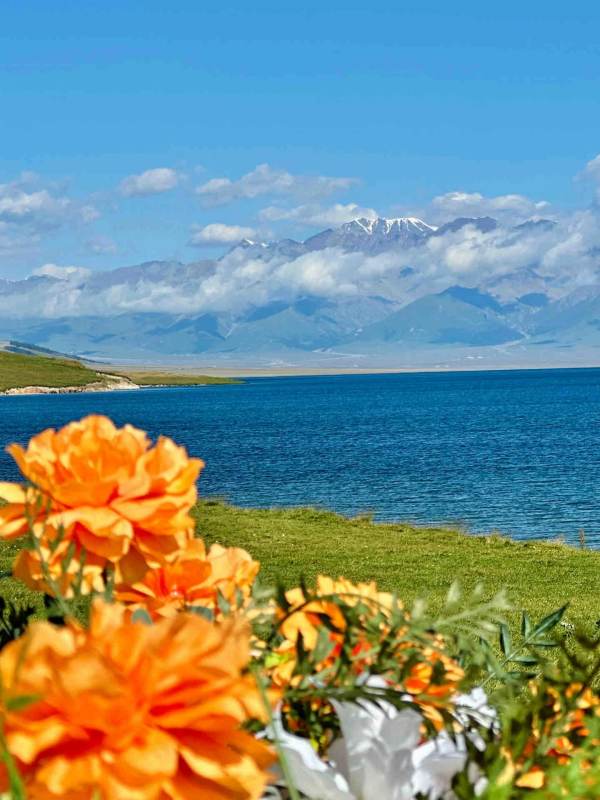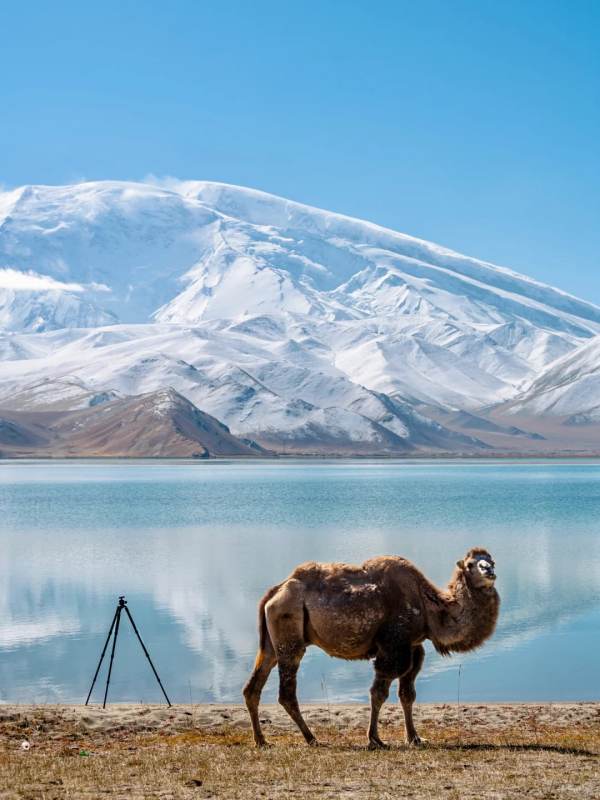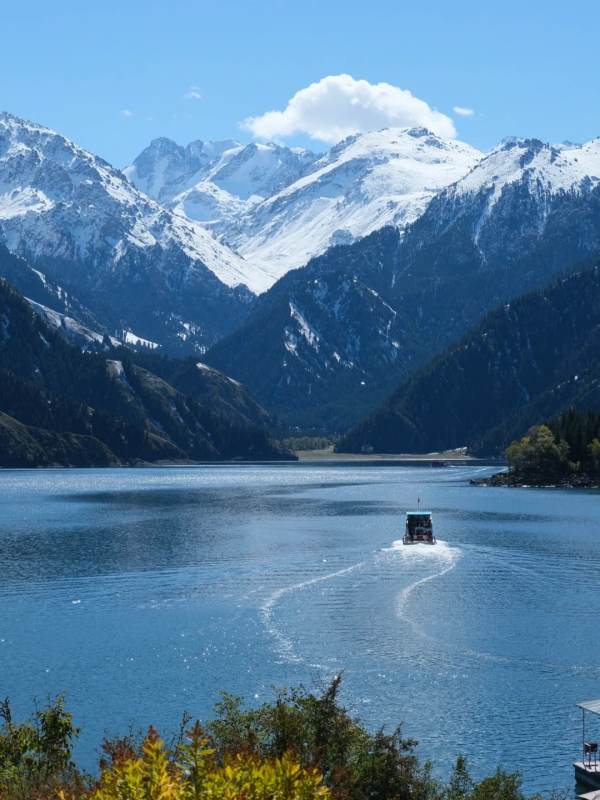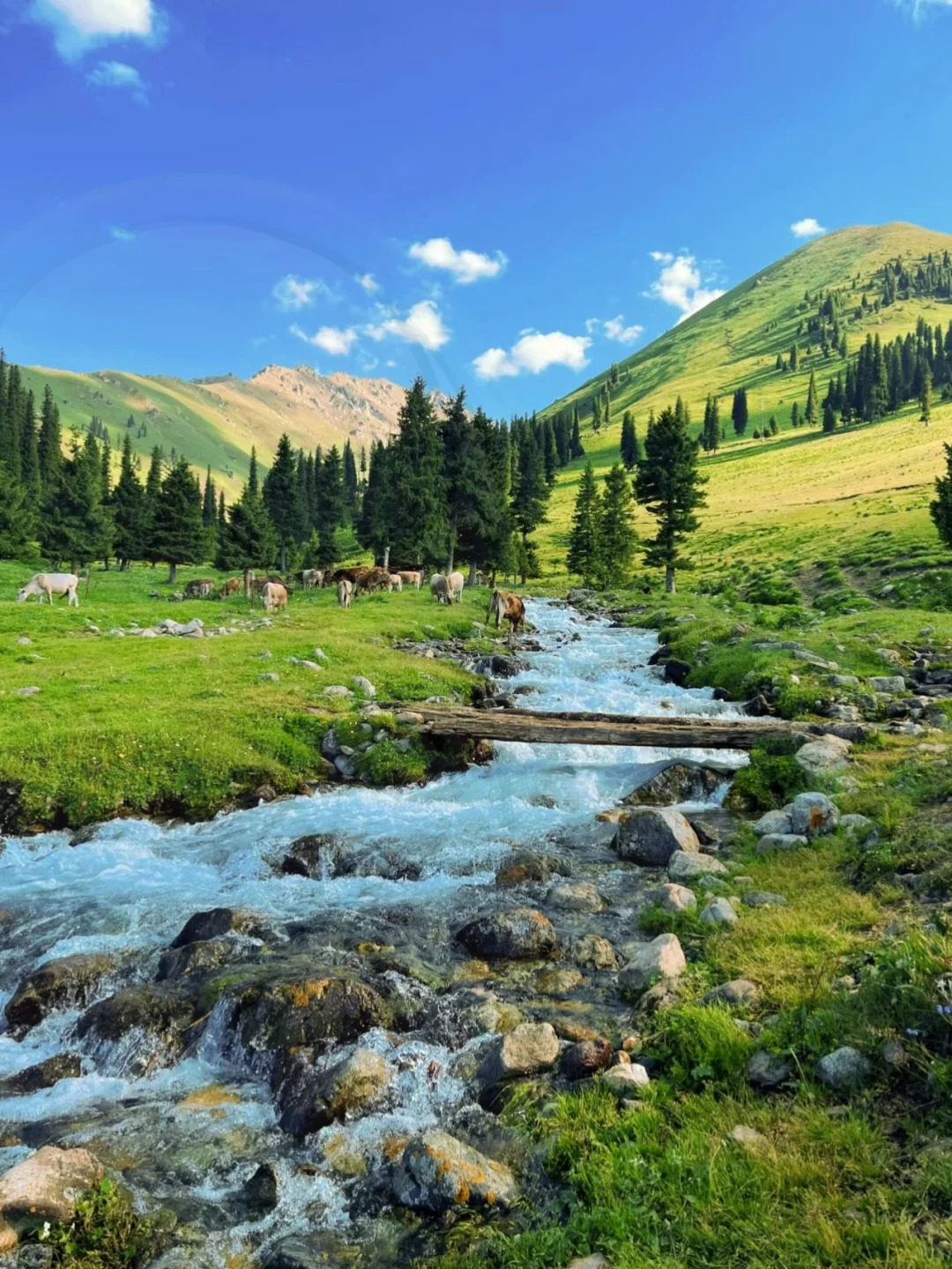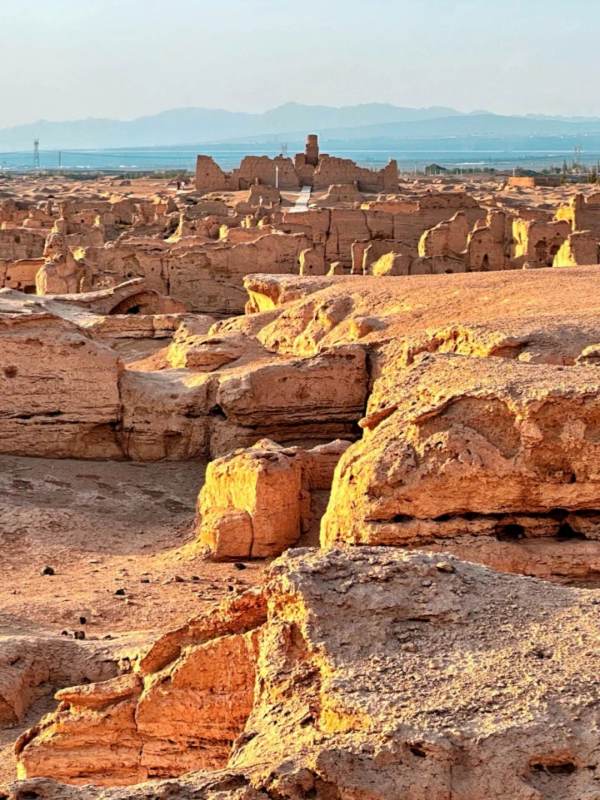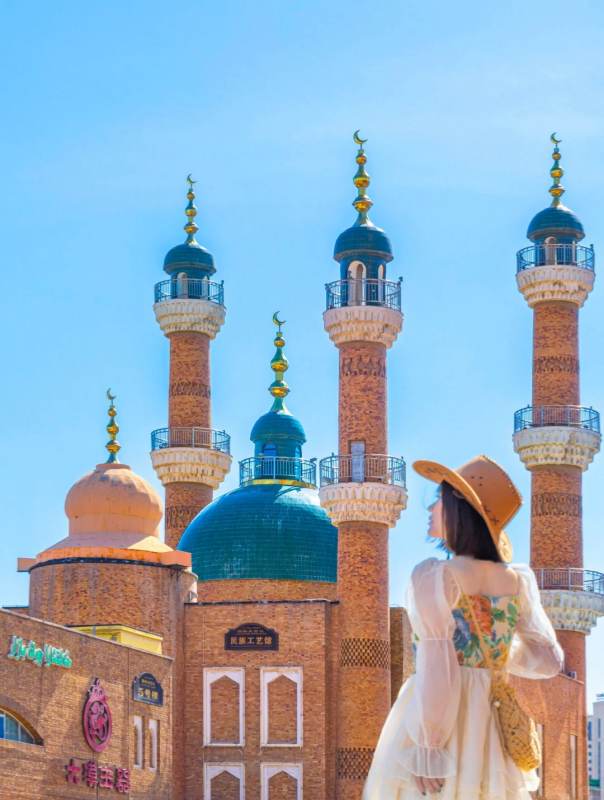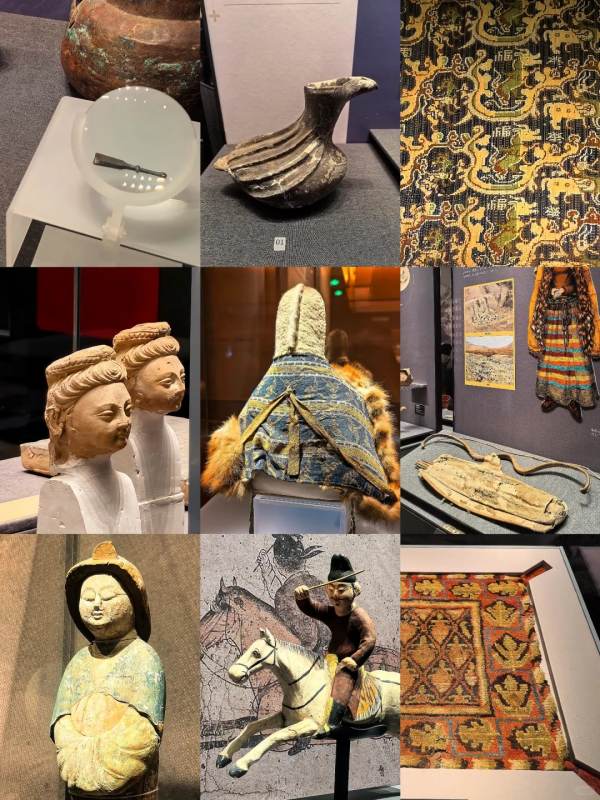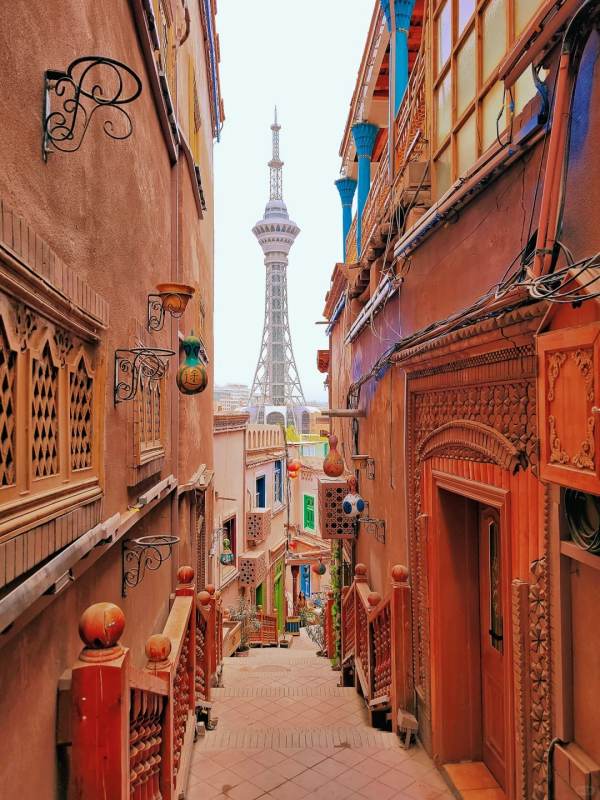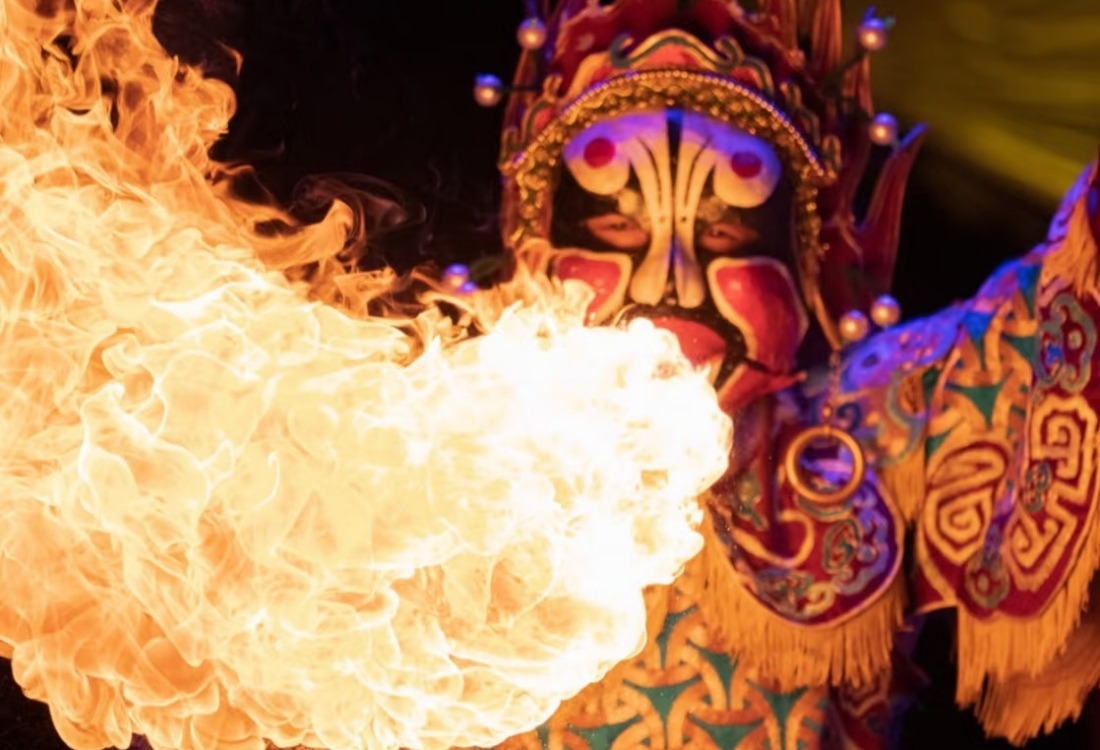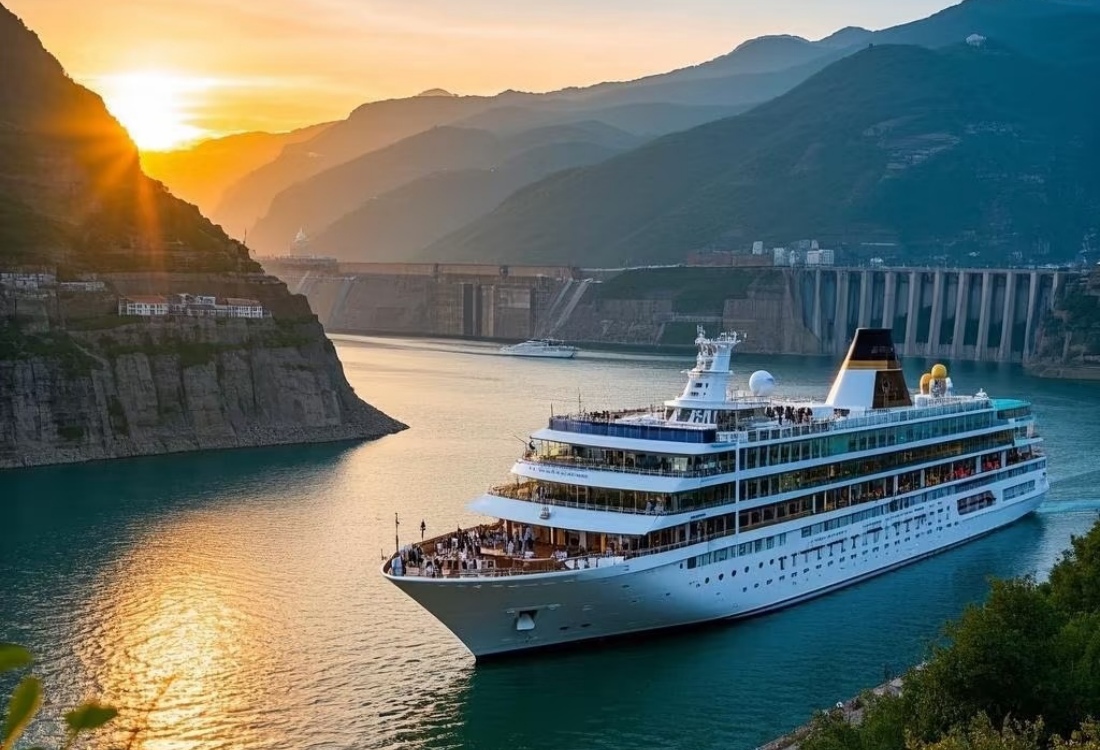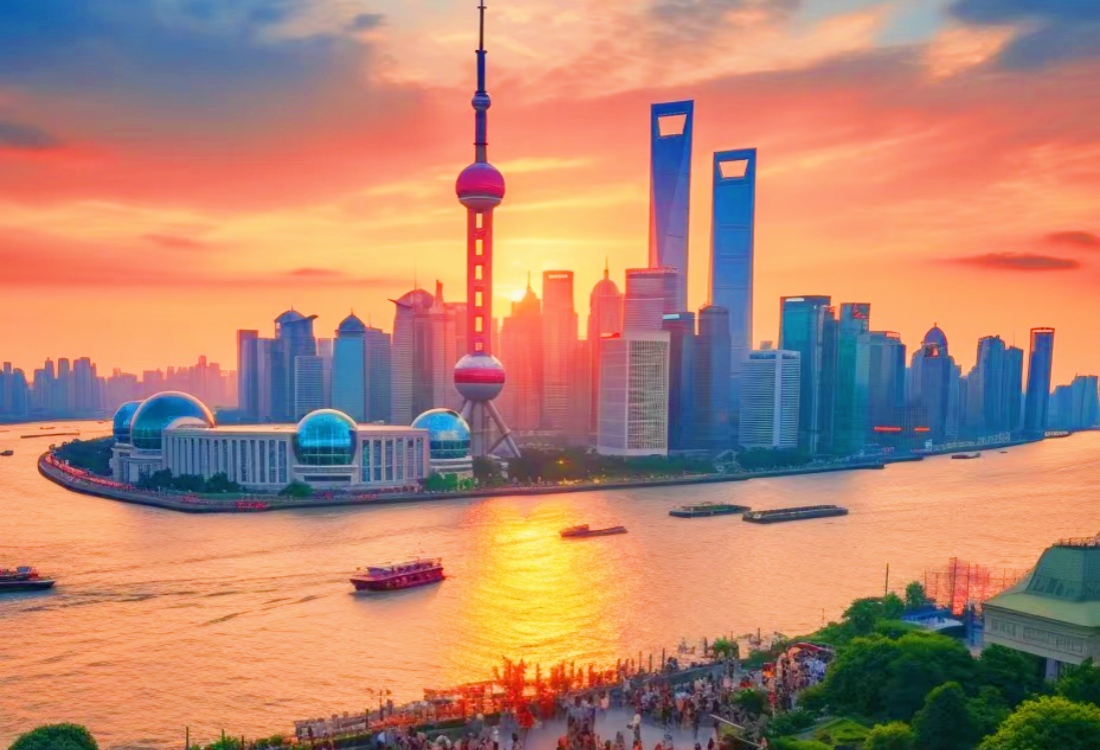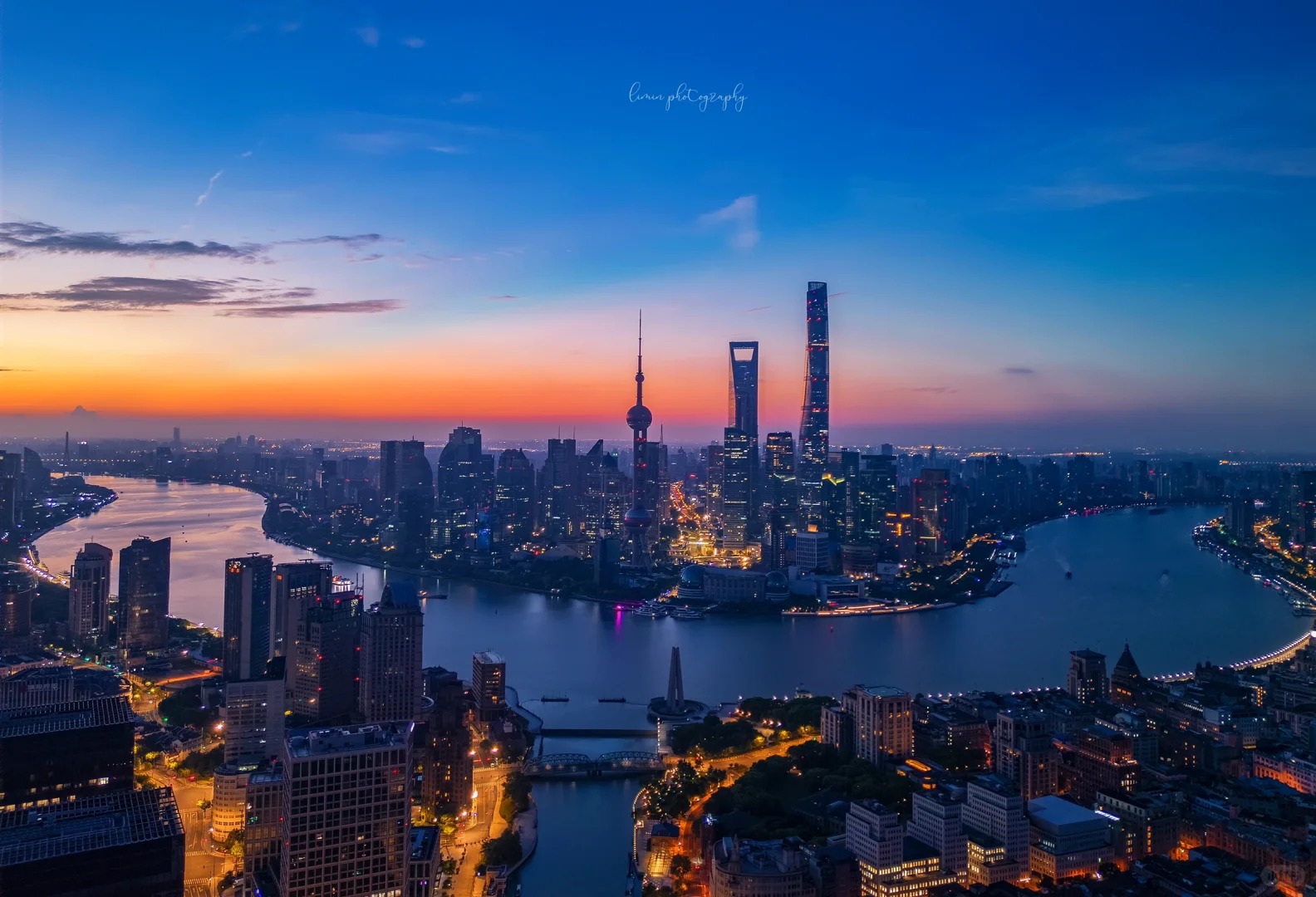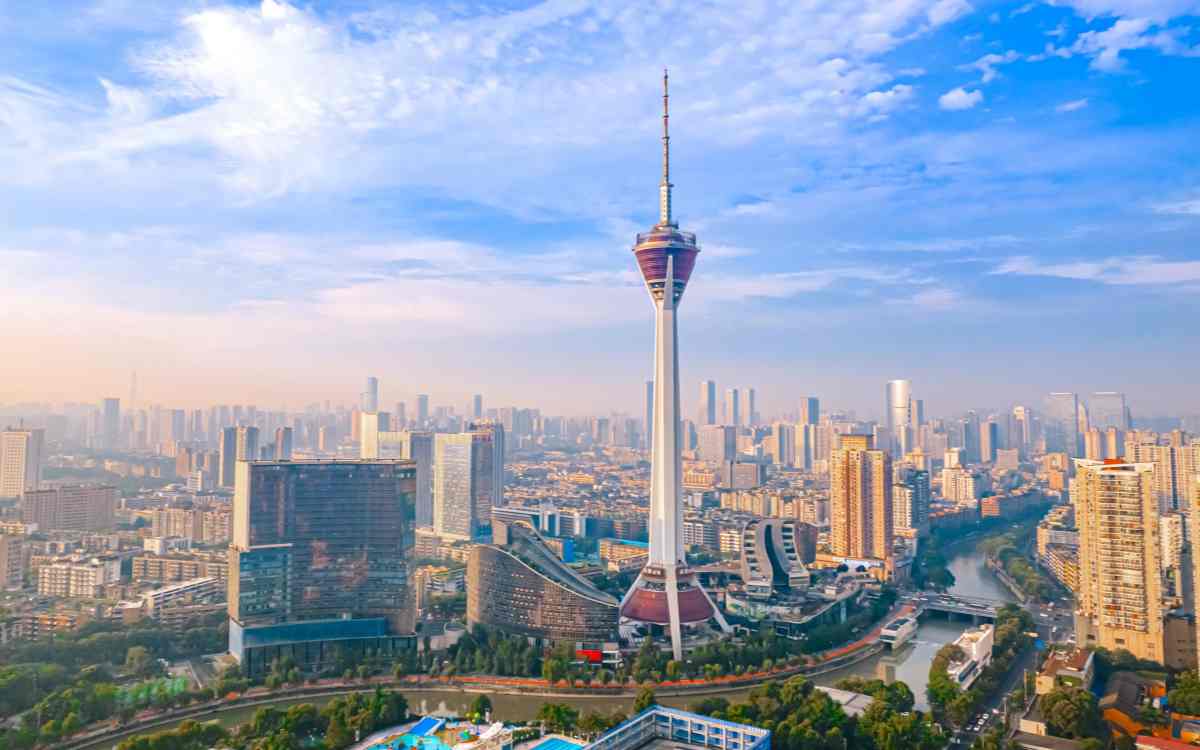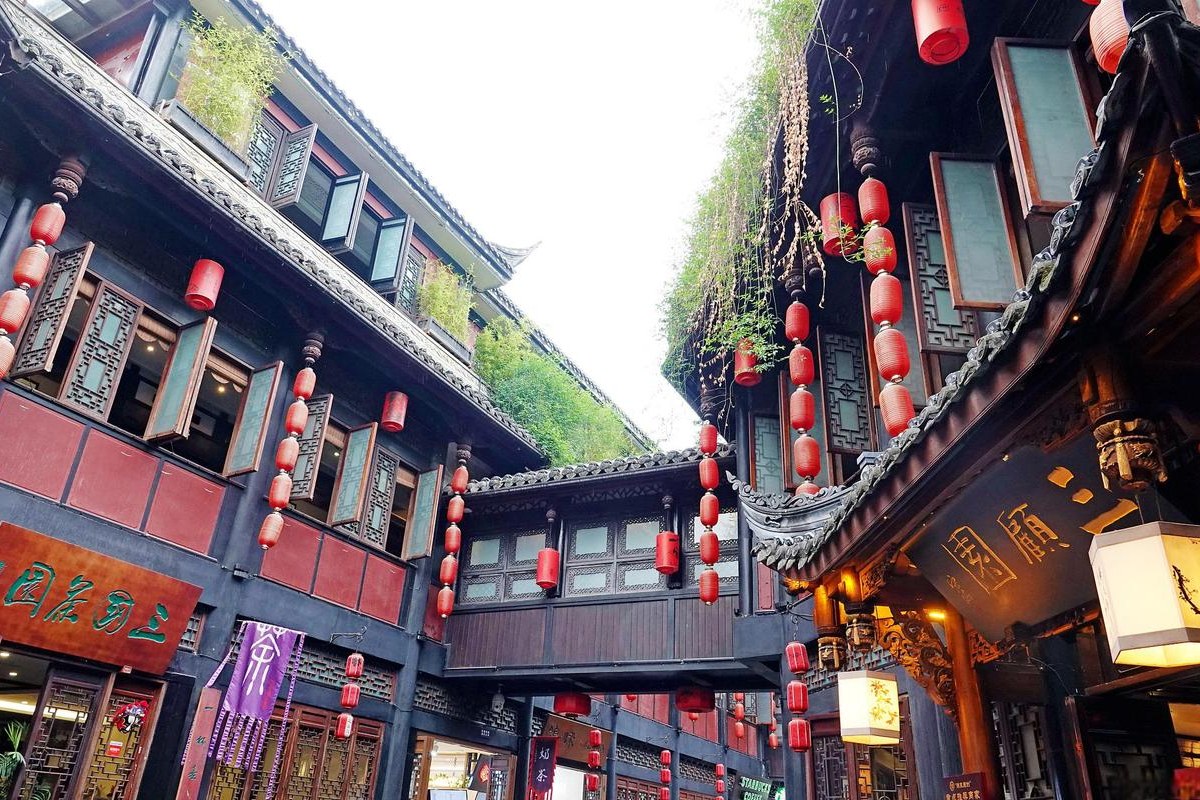Table of Contents
Toggle1. Discover Xinjiang’s Natural Landscapes
Xinjiang, a vast autonomous region in Northwest China, is a land of incredible diversity. It’s a place where ancient history meets stunning natural beauty, offering a unique travel experience. Let’s explore some of the top things to do and see in this captivating region.
Xinjiang is home to some of China’s most beautiful lakes, each offering a unique vista and experience.
Heavenly Lake (Tianshan Tianchi)
Nestled high in the Tianshan Mountains, east of Urumqi, Heavenly Lake (Tianchi) is often called the “Pearl of Tianshan Mountain.” This alpine lake, sitting at an elevation of about 1,910 meters, boasts crystal-clear waters that reflect the surrounding snow-capped peaks and lush evergreen forests. It’s a perfect spot for nature lovers and photographers. Summer visits offer cool, refreshing air. You can enjoy a leisurely walk along its shores or take a boat ride for a different perspective. Remember to bring a jacket, especially for boat trips, as the water and mountain air can be quite chilly.
Kanas Lake and Nature Reserve
Located in the Altay Prefecture of northern Xinjiang, Kanas Nature Reserve is a jewel often referred to as the “Pearl of Northern Xinjiang.” The reserve encompasses stunning lakes, winding rivers, dense forests, and vast grasslands. Kanas Lake itself is famous for its mesmerizing, clear waters that can change color with the seasons and weather conditions. This area is a paradise for outdoor enthusiasts, offering popular hiking routes that connect Kanas Lake with picturesque villages like Hemu and Baihaba, where you can experience Tuvan culture.
Sayram Lake
Sayram Lake, situated west of Urumqi, is the largest alpine lake in Xinjiang. It’s a breathtaking sight, especially in summer when wildflowers blanket the surrounding grasslands, creating a vibrant carpet of color against the backdrop of snow-capped mountains to the west. The air is cool and invigorating. Visitors can enjoy horseback riding, explore historical sites, or simply relax and take in the serene beauty.
Karakul Lake
Near the foot of the majestic Muztagh Ata mountain, Karakul Lake offers stunning reflections of the surrounding peaks, including Muztagh Ata, Kongur Tagh, and Kongur Tiube. It’s a popular spot for trekkers and those wishing to experience the high-altitude beauty of the Pamir Plateau. The landscape is stark yet incredibly beautiful, often dotted with yurts of the local Kyrgyz herders.

10 Days Xinjiang Private Kanas & Hemu Tour: Sayram Lake, Nalati Grassland

11 Days North Xinjiang Tour from Urumqi : Heavenly Lake, Hemu Village, Sayram Lake
The grasslands of Xinjiang are legendary, offering vast open spaces and a glimpse into nomadic traditions.
Nalati Grassland
Located on the northern slopes of Nalati Mountain in the Ili Kazakh Autonomous Prefecture, Nalati Grassland is one of the world’s premier grasslands. It has been a renowned pastureland for centuries. The best time to visit is from June to September, when the landscape is a vibrant green, with rolling hills, deep valleys, and forests creating a picturesque scene. Here, you can experience the local customs of the Kazak ethnic group and even try horseback riding across the expansive meadows.
Kalajun Grassland
Kalajun Grassland in Northern Xinjiang is a beautiful place with rolling hills and tall snow-covered mountains. The grassland is full of colorful flowers, forests, and wide open spaces. Visitors can enjoy sightseeing, photography, and learn about Kazakh culture while staying in traditional yurts. It is a perfect spot for nature lovers and peaceful adventures.
Taklamakan Desert
The Taklamakan Desert, China’s largest and the world’s second-largest shifting-sand desert, is an awe-inspiring, if formidable, landscape. Often called the “Sea of Death,” it offers a unique adventure. One popular activity is to travel along one of the desert highways that traverse this vast expanse. The best time for this journey is from late October to mid-November when sandstorms are less frequent, mosquitoes are fewer, and the golden leaves of the desert poplar trees create an unforgettable, starkly beautiful scene.
Flaming Mountains (Huoyan Shan)
Near Turpan, the Flaming Mountains are a series of barren, eroded red sandstone hills. They gained fame through the classic Chinese novel “Journey to the West.” The intense heat in summer and the striking reddish color of the mountains, especially under the sunlight, give them their fiery appearance. It’s a unique geological spectacle and a popular photo stop.

7 Days Northern Xinjiang Tour: Urumqi Keketuohai Burqin Hemu Kanas Urho
2. Immersive Cultural Experiences
Xinjiang’s rich history as a part of the Silk Road has endowed it with a vibrant mix of cultures and historical sites.
Kashgar Old Town
Kashgar Old Town is the heart of Uyghur culture and a living museum of traditions. With centuries of history, its labyrinthine alleys are lined with traditional Uyghur and Islamic-style buildings. Explore bustling handicraft shops, tea houses, and residences. Key sites within or near the Old Town include the Id Kah Mosque, one of China’s largest, and the impressive Abakh Khoja Tomb. Wandering through Kashgar Old Town offers a profound insight into the daily life and heritage of the Uyghur people.
Xinjiang International Grand Bazaar (Urumqi)
Located in Urumqi, the Xinjiang International Grand Bazaar is the largest market of its kind in China and a vibrant hub of commerce and culture. The architecture features grand Islamic style. Here, you can find a dazzling array of goods, from colorful textiles, carpets, and local handicrafts to dried fruits, nuts, spices, and essential oils. It’s also a fantastic place to sample delicious local street food. The central Sightseeing Tower offers panoramic views of the city and has exhibits on the Silk Road.
Ancient City of Jiaohe (Turpan)
Near the city of Turpan lies the Ancient City of Jiaohe, a remarkable archaeological site. This city, established some 2,300 years ago, is considered the largest, oldest, and best-preserved earthen city in the world. Its unique layout features streets and buildings carved directly from the loess soil. Walking through the ruins of monasteries, official buildings, and residential areas, you can connect with its long and significant history on the Silk Road. Sunset is a particularly atmospheric time for photos.
Xinjiang Regional Museum (Urumqi)
For those interested in the deep history and diverse cultures of the region, the Xinjiang Regional Museum in Urumqi is a must-visit. It houses an extensive collection of artifacts, including well-preserved ancient mummies (like the “Loulan Beauty”), textiles, and items showcasing the traditions of the various ethnic groups that call Xinjiang home.
Uyghur Muqam
Experience the soul of Uyghur culture through Muqam, a complex and enchanting musical tradition that combines songs, dances, and instrumental music. Recognized by UNESCO as an Intangible Cultural Heritage of Humanity, attending a Muqam performance offers a captivating insight into Uyghur artistic expression.
3. A Taste of Xinjiang: Culinary Delights
No visit to Xinjiang is complete without indulging in its unique and flavorful cuisine. Influenced by Central Asian, Turkic, and Han Chinese culinary traditions, Xinjiang food is known for its use of lamb, beef, aromatic spices, and hearty breads and noodles.
- Lamb Kebabs (Yangrou Chuan): Skewers of seasoned lamb, often spiced with cumin and chili, grilled over charcoal. A ubiquitous and delicious street food.
- Pilaf (Polo / Rice Taken by Hands): A savory rice dish cooked with lamb or chicken, carrots, onions, and raisins. A staple at celebrations and everyday meals.
- Nang Bread: A type of roasted flatbread, often circular and baked in a tandoor-like oven. It comes in various thicknesses and flavors, some sprinkled with sesame seeds or onions.
- Laghman (Pulled Noodles): Hand-pulled noodles served with a stir-fry of meat (usually lamb or beef) and vegetables like bell peppers, tomatoes, and onions.
- Grilled Whole Lamb (Kao Quan Yang): A spectacular dish reserved for special occasions, where a whole lamb is seasoned and roasted to perfection.
- Dapanji (Big Plate Chicken): A hearty stew of chicken, potatoes, and peppers, seasoned with chili and Sichuan peppercorns, often served over wide, flat noodles.
Comparing Key Xinjiang Attractions at a Glance
To help you decide which attractions best suit your interests, the table below offers a quick comparison of some of Xinjiang’s most popular destinations. It highlights their type, what kind of traveler they might appeal to, their main features, and general location.
| Attraction | Type | Best For | Key Feature | General Location |
|---|---|---|---|---|
| Heavenly Lake (Tianchi) | Alpine Lake | Scenery, Photography, Relaxation | “Pearl of Tianshan”, boat rides, stunning reflections | Near Urumqi (East) |
| Kanas Nature Reserve | Nature Reserve | Hiking, Wildlife, Scenery, Photography | Color-changing Kanas Lake, Hemu Village, Tuvan culture | Northern Xinjiang (Altay) |
| Sayram Lake | Alpine Lake | Scenery, Wildflowers (summer), Horse Riding | Largest alpine lake in Xinjiang, cool climate | West of Urumqi (Bortala) |
| Nalati Grassland | Grassland | Scenery, Kazak Culture, Horse Riding, Nature Walks | Famous pastureland, mountain views, lush valleys | Ili Prefecture |
| Taklamakan Desert | Desert | Adventure, Unique Landscapes, Photography | “Sea of Death”, desert highway crossing, poplar forests (autumn) | Southern Xinjiang |
| Kashgar Old Town | Historic Town | Culture, History, Architecture, Local Life | Vibrant Uyghur traditions, Id Kah Mosque, bustling alleys | Southwestern Xinjiang (Kashgar) |
| Xinjiang International Grand Bazaar | Market | Shopping, Food, Culture, Souvenirs | Largest bazaar in China, diverse local crafts & food, Islamic architecture | Urumqi City |
| Ancient City of Jiaohe | Archaeological Site | History, Photography, Archaeology | World’s largest and best-preserved earthen city ruins | Near Turpan |
This table should make it easier to prioritize based on your travel style and interests, whether you’re seeking natural beauty, cultural immersion, or historical exploration.
Frequently Asked Questions about Visiting Xinjiang
What is the best time of year to visit Xinjiang?
The best time to visit Xinjiang largely depends on what you want to see and do. Generally, May to October offers the most pleasant weather for exploring most parts of the region.
- Spring (April-May): Ideal for seeing blooming apricot flowers in areas like Ili. Weather is mild.
- Summer (June-August): Great for grasslands like Nalati and Bayanbulak, and alpine lakes like Kanas and Heavenly Lake, as they are lush and cool. However, desert areas like Turpan can be extremely hot.
- Autumn (September-October): Considered by many to be the best season. Kanas Lake is famous for its autumn colors. The weather is generally mild, and it’s harvest season for fruits. Taklamakan Desert is also more comfortable.
- Winter (November-March): Very cold, especially in the north, but offers opportunities for winter sports and seeing snow-covered landscapes. Some areas might be less accessible.
What kind of clothing should I pack for Xinjiang?
Xinjiang has a continental climate with significant temperature variations, both seasonally and diurnally (between day and night). Layering is key.
- Summer: Light clothing for daytime, but always have a jacket or sweater for evenings, especially in mountainous areas or grasslands. Sun protection (hat, sunglasses, sunscreen) is crucial.
- Spring/Autumn: Medium-weight clothing, including sweaters, light jackets, and long-sleeved shirts. Be prepared for cooler evenings.
- Winter: Heavy winter clothing is essential, including thermal underwear, down jackets, warm hats, gloves, and scarves.
- Comfortable walking shoes are a must year-round. If visiting mosques or religious sites, modest dress (covering shoulders and knees) is advisable.
Is it easy to find local food in Xinjiang?
Yes, local food is abundant and a highlight of visiting Xinjiang! You’ll find restaurants, street food stalls, and markets offering a wide variety of regional specialties. Popular dishes like lamb kebabs, pilaf (polo), nang bread, and laghman noodles are widely available in cities and towns. Don’t be afraid to try local eateries for an authentic experience. In larger cities like Urumqi and Kashgar, you’ll also find options for other Chinese cuisines and sometimes international food, but embracing the local flavors is highly recommended.
Are there many opportunities for outdoor activities in Xinjiang?
Absolutely! Xinjiang is a paradise for outdoor enthusiasts. The diverse landscapes offer numerous activities:
- Hiking and Trekking: Popular in areas like Kanas Nature Reserve, Tianshan Mountains (around Heavenly Lake), and the Pamir Plateau (near Karakul Lake).
- Horse Riding: Widely available on the grasslands like Nalati and Bayanbulak, offering a traditional way to explore the vast meadows.
- Camel Riding: A unique experience in desert areas, particularly around Turpan or along the edges of the Taklamakan Desert.
- Camping: Possible in many scenic areas, especially on organized tours or in designated spots in nature reserves and grasslands.
- Photography: The stunning and varied landscapes provide endless opportunities for photographers.
Always ensure you are well-prepared for any outdoor activity, considering the altitude and weather conditions.
What are some unique cultural experiences in Xinjiang?
Xinjiang offers a wealth of unique cultural experiences:
- Visiting Kashgar Old Town: Immerse yourself in Uyghur daily life, explore traditional architecture, and visit the Id Kah Mosque.
- Shopping at the International Grand Bazaar in Urumqi: Experience the vibrant market atmosphere and find local handicrafts and foods.
- Experiencing Uyghur Muqam Music: Attend a performance of this traditional art form.
- Visiting Kazak or Kyrgyz Yurts: On grasslands like Nalati or near Karakul Lake, you might have the chance to visit traditional yurts and learn about nomadic lifestyles.
- Exploring Ancient Silk Road Sites: Discover ruins like Jiaohe or Gaochang to understand the region’s historical importance.
- Attending Local Festivals: If your timing aligns, festivals like Corban Festival or Nowruz (depending on the ethnic group and calendar) can offer deep cultural insights, though public participation may vary.

